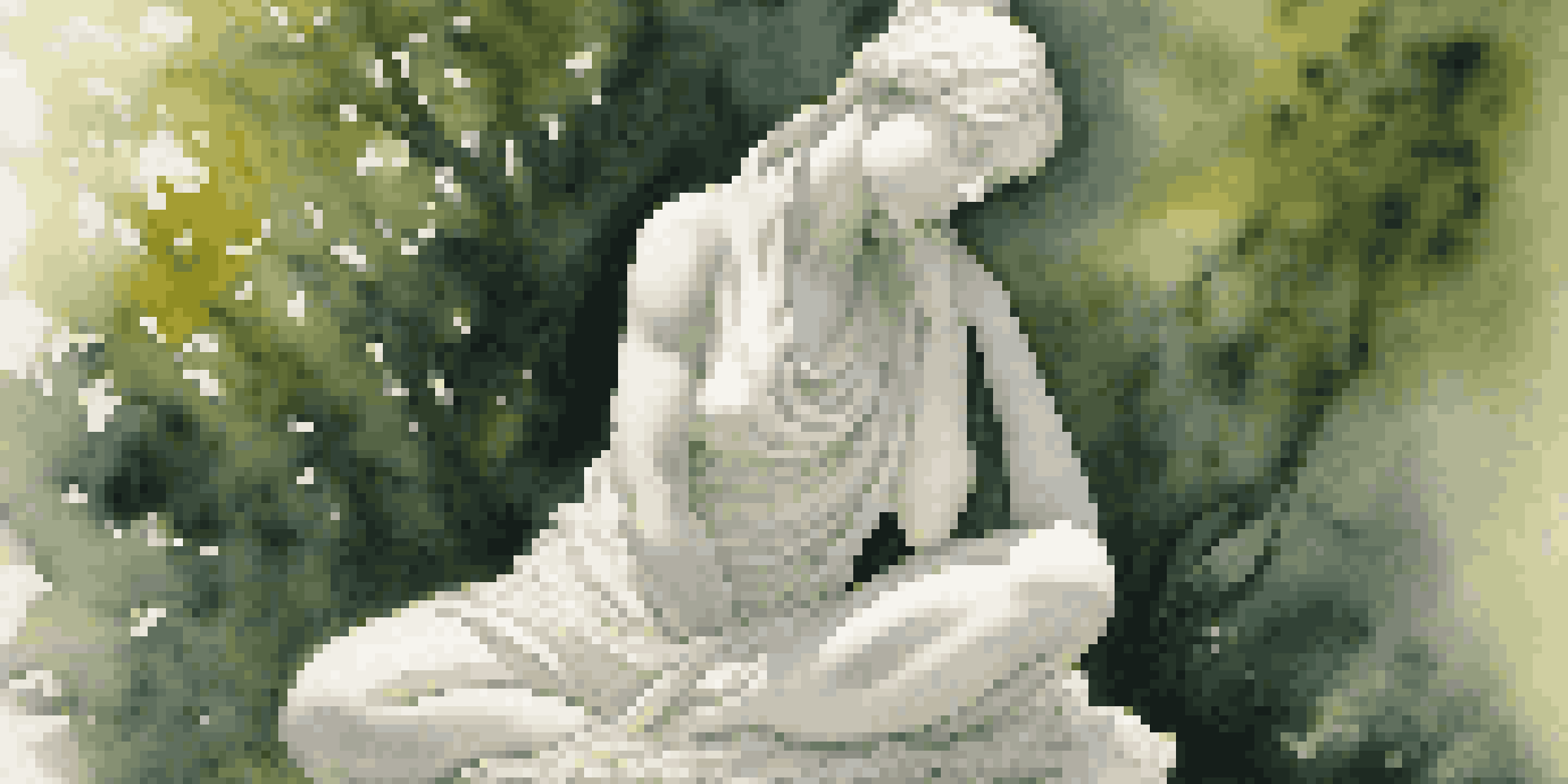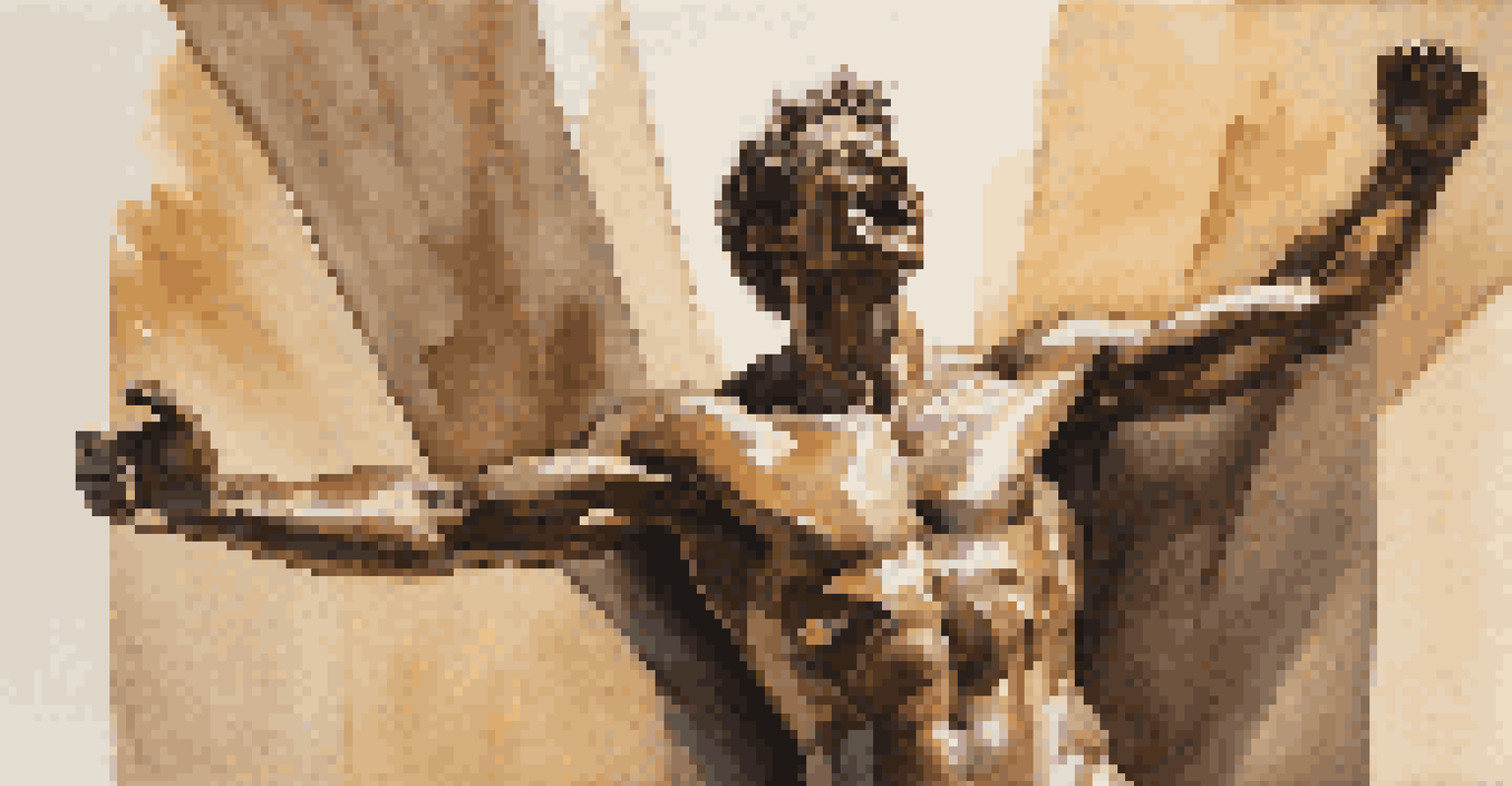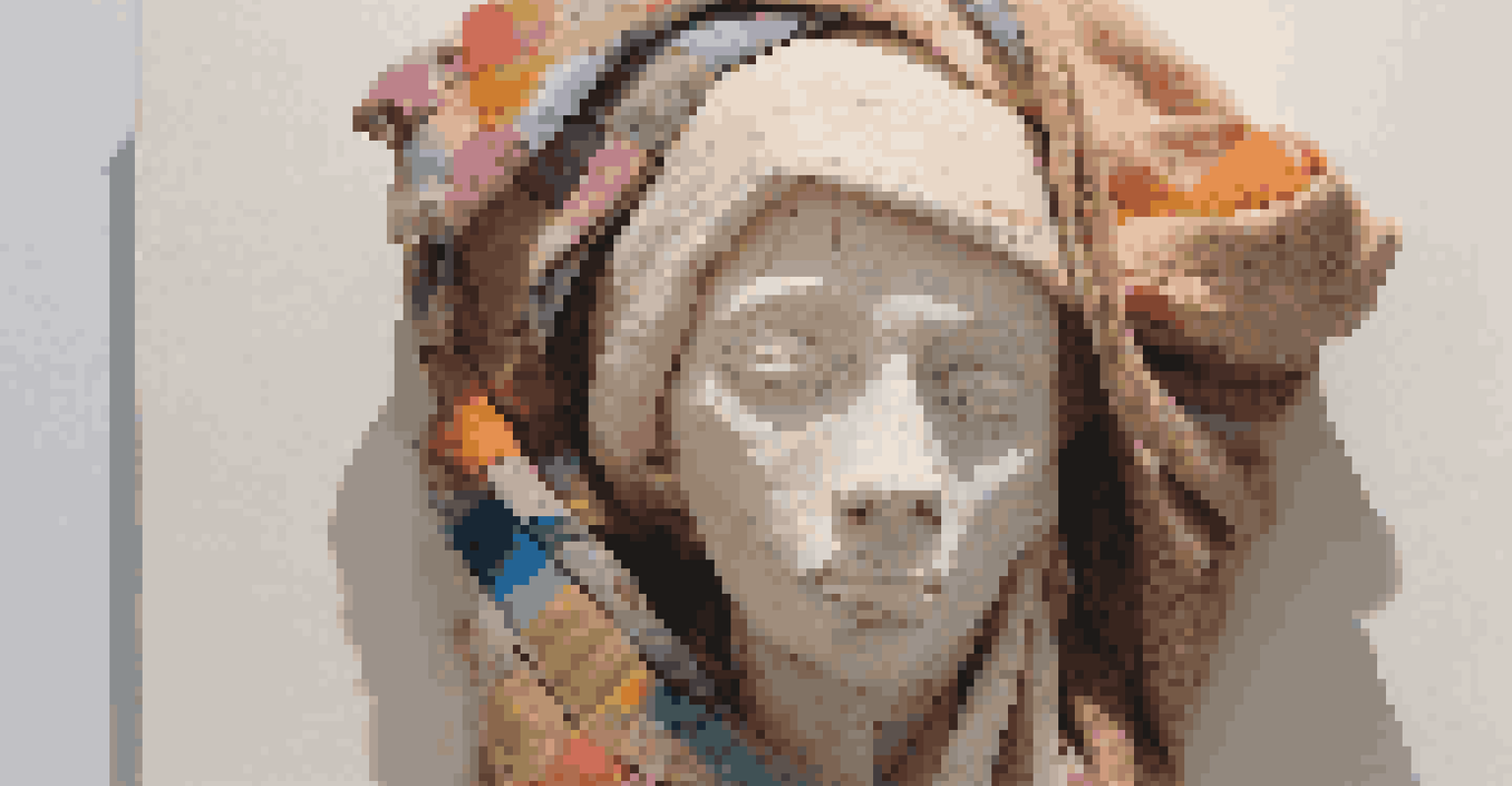The Art of Figurative Sculpture: Capturing Human Emotion

Understanding Figurative Sculpture and Its Importance
Figurative sculpture is a captivating art form that focuses on representing the human figure. This type of sculpture is not only about the physical representation but also about capturing the essence of human emotion. Artists use various techniques and materials to convey feelings and stories, making each piece a unique reflection of human experience.
Sculpture is the art of the intelligence.
The importance of figurative sculpture can be traced back to ancient times, where it played a significant role in storytelling and cultural expression. From the graceful forms of Greek statues to the emotive works of modern sculptors, each piece invites viewers to connect with the emotions being portrayed. This connection fosters a deeper appreciation for the complexities of human emotion and experience.
In today's world, figurative sculpture continues to evolve while maintaining its roots in human expression. Artists experiment with materials, styles, and techniques to breathe new life into traditional forms. This ongoing dialogue between past and present enriches the art form, ensuring it remains relevant and impactful.
Materials and Techniques in Figurative Sculpture
The materials used in figurative sculpture can greatly influence the emotion conveyed in the artwork. Common materials include clay, bronze, stone, and wood, each offering distinct textures and finishes. For instance, the smooth surface of marble can impart a sense of timelessness, while the raw, organic quality of wood can evoke warmth and intimacy.

Techniques like carving, modeling, and casting play critical roles in shaping the final piece. Carving involves removing material to reveal the form, often creating a sense of permanence and solidity. In contrast, modeling allows for a more fluid approach, where artists can manipulate the material directly, capturing spontaneous emotions in the process.
Figurative Sculpture Captures Emotion
Figurative sculpture embodies human emotion, allowing artists to connect deeply with viewers through their work.
Additionally, the use of mixed media has become popular, allowing artists to combine various materials to enhance emotional depth. For instance, incorporating found objects or textiles can add layers of meaning, inviting viewers to engage with the sculpture on multiple levels. This innovative approach reflects the dynamic nature of human emotion and experience.
The Role of Emotion in Figurative Sculpture
Emotion is at the heart of figurative sculpture, serving as a bridge between the artist and the viewer. Sculptors often draw from personal experiences or societal issues, channeling their feelings into their work. This emotional authenticity resonates with audiences, prompting reflections on their own experiences and emotions.
Art enables us to find ourselves and lose ourselves at the same time.
For example, consider the work of renowned sculptor Alberto Giacometti, whose elongated figures often evoke feelings of isolation and existential angst. His pieces compel viewers to confront their own vulnerabilities, establishing a powerful emotional connection. This ability to evoke such strong feelings is what sets figurative sculpture apart from other art forms.
Moreover, the expression of emotion in figurative sculpture can vary widely, from joy and love to despair and tragedy. Each piece has the potential to tell a story, allowing viewers to explore the full spectrum of human emotion. This narrative aspect adds depth, making figurative sculpture a compelling medium for both artists and audiences alike.
The Influence of Culture on Figurative Sculpture
Cultural context plays a crucial role in shaping the themes and emotions expressed in figurative sculpture. Different cultures have unique approaches to representing the human figure, often influenced by their historical, social, and spiritual backgrounds. For instance, African sculptures often emphasize stylization and abstraction, reflecting the spiritual beliefs of the community.
In contrast, Western traditions have historically leaned towards realism, aiming to capture the human form in a lifelike manner. This cultural emphasis on realism can be seen in works from the Renaissance period, where artists strived for anatomical precision and emotional depth. Such variations highlight how culture informs artistic expression and the portrayal of human emotion.
Cultural Influence Shapes Art Forms
Cultural contexts significantly shape the themes and expressions found in figurative sculpture, reflecting diverse human experiences.
As globalization continues to influence the art world, contemporary figurative sculptors often blend elements from various cultures. This fusion not only enriches the art form but also creates a dialogue between diverse perspectives on human emotion. In this way, figurative sculpture becomes a universal language, transcending cultural boundaries.
Notable Figurative Sculptors Through History
Throughout history, many sculptors have left a significant mark on the world of figurative sculpture. Artists like Michelangelo, Rodin, and Henry Moore have not only mastered their craft but also explored the depths of human emotion in their work. Michelangelo's 'David,' for instance, embodies strength and determination, inviting viewers to reflect on their own aspirations.
Auguste Rodin, often regarded as the father of modern sculpture, pushed the boundaries of emotion in his pieces. His work, 'The Thinker,' captures the essence of contemplation and introspection, resonating with anyone who has grappled with profound thoughts. Rodin's ability to convey complex emotions through the human form has inspired countless artists and continues to influence contemporary sculptors.
In more recent times, artists like Louise Bourgeois and Anish Kapoor have explored themes of identity, trauma, and the subconscious in their figurative works. Their innovative approaches challenge traditional notions of sculpture, inviting viewers to engage with the emotions embedded in their pieces. This ongoing evolution of figurative sculpture highlights the timeless relevance of human emotion in art.
The Emotional Impact of Figurative Sculpture on Viewers
One of the most compelling aspects of figurative sculpture is its ability to evoke strong emotional responses in viewers. When we encounter a sculpture that resonates with us, it can stir feelings of nostalgia, joy, sadness, or even anger. This emotional engagement is what makes sculpture a powerful medium for storytelling and reflection.
For instance, encountering a sculpture that portrays grief can lead to a shared understanding of loss, allowing viewers to process their own emotions. This connection fosters empathy and creates a space for dialogue about shared human experiences. The emotional impact of figurative sculpture can lead to healing and understanding, bridging gaps between individuals and communities.
Future Trends in Sculpture Art
The future of figurative sculpture will embrace new technologies and themes, continuing to reflect the evolving landscape of human emotion.
Moreover, the physical presence of a sculpture invites a sensory experience that enhances emotional engagement. Viewers can walk around the piece, observe it from different angles, and even touch it in some cases, deepening their connection to the artwork. This tactile interaction enriches the experience, making the emotions conveyed even more poignant and relatable.
The Future of Figurative Sculpture and Human Emotion
As we look to the future, figurative sculpture will undoubtedly continue to evolve, reflecting the changing landscape of human emotion. Contemporary artists are increasingly exploring themes of identity, social justice, and mental health, using their work as a platform for dialogue and awareness. This shift signifies a growing recognition of the power of art to communicate complex emotions.
Technological advancements also open new avenues for sculptors, allowing them to experiment with digital tools and materials. For example, 3D printing technology enables artists to create intricate forms that may have been challenging to achieve through traditional methods. This innovation not only expands creative possibilities but also invites new interpretations of human emotion and experience.

Ultimately, the art of figurative sculpture will continue to serve as a mirror reflecting the human condition. As emotions remain a fundamental aspect of our lives, sculptors will strive to capture and express these feelings, creating pieces that resonate across generations. The future of figurative sculpture promises to be as rich and diverse as the emotions it seeks to convey.